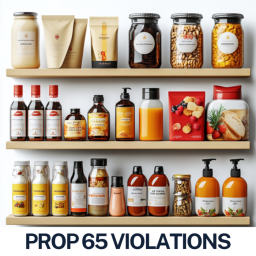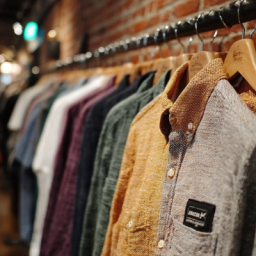
Quick Answer: Circular design and compostable shoes are shaping the future of footwear CPG. But in 2025, brands face growing legal challenges around sustainability claims. From EU ecodesign rules to U.S. class actions targeting greenwashing, companies must ensure that “compostable” or “biodegradable” shoes meet regulatory standards or risk lawsuits, recalls, and reputational damage.
Why Is Circular Design a Legal Issue for Footwear CPG?
Footwear brands are investing in circular innovation, designing shoes that can be disassembled, recycled, or even composted. Puma’s Re:Suede project, Adidas’ Futurecraft Loop, and startups like Solk are all pursuing recyclable or compostable footwear.
But unlike food or paper goods, footwear is complex: adhesives, foams, and synthetic fabrics often prevent true biodegradability. Marketing claims like “fully compostable” or “100% recyclable” raise red flags for regulators if they are not scientifically proven.
For apparel and footwear CPG companies, the legal challenge is ensuring marketing matches reality. If not, brands risk being accused of greenwashing.
What Regulations Are Shaping Compostability Claims?
EU Ecodesign for Sustainable Products Regulation (ESPR)
In effect starting 2025, ESPR requires footwear to meet criteria for durability, repairability, and recyclability. Compostability claims must be supported by technical standards. Digital Product Passports (DPPs) will eventually provide regulators and consumers with material-level data—making it harder to exaggerate sustainability.
FTC Green Guides (U.S.)
The FTC is revising its Green Guides to clarify when claims like “compostable” or “biodegradable” are permissible. Products must fully break down within a short period (3–6 months) in typical disposal conditions. Many footwear products fail this test.
What Recent Litigation Shows About Sustainability Claims in Footwear CPG
Gore-Tex (U.S., 2024)
- The case: Gore-Tex was sued for allegedly misleading consumers by claiming its products were “sustainable” while continuing to use PFAS—per- and polyfluoroalkyl substances, commonly called “forever chemicals.”
- What went wrong: The company leaned on general sustainability messaging without addressing the contradiction between eco-friendly branding and toxic chemicals in its supply chain.
- Lesson: Brands must align ingredient-level realities with their sustainability claims. The solution is to audit product composition and disclose limitations openly.
Allbirds (U.S., 2022, Dwyer v. Allbirds)
- The case: A consumer class action alleged that Allbirds overstated the environmental benefits of its sneakers, citing questionable assumptions in its carbon footprint calculator.
- What went wrong: While Allbirds marketed transparency, its calculations relied on selective data and didn’t account for the full lifecycle impact (e.g., end-of-life disposal).
- Lesson: Even innovative tools can backfire if data is incomplete. Brands should use independently verified lifecycle assessments and avoid oversimplifying complex sustainability data for marketing.
Adidas (Germany, 2024)
- The case: A German court ruled against Adidas, preventing it from advertising its goal of being “climate neutral by 2050” due to lack of a detailed plan.
- What went wrong: Adidas promoted a future-oriented claim without clear pathways or measurable interim steps. The court found this misleading to consumers.
- Lesson: Aspirational targets must be backed by roadmaps, milestones, and evidence. A safer approach is phrasing claims as “working toward net zero by 2050” and disclosing detailed strategies.
What Legal Risks Do Footwear CPG Brands Face with Compostability?
- Greenwashing Lawsuits – “Compostable shoes” claims can trigger class actions if products do not break down as advertised.
- Regulatory Enforcement – The FTC can fine brands for misleading marketing, while EU regulators can ban claims outright.
- Product Recalls and Penalties – Mislabeling risks consumer protection violations, leading to recalls.
- Reputational Damage – Greenwashing allegations undermine consumer trust, especially with eco-conscious Gen Z buyers.
How Can Brands Reduce Legal Risk Around Compostability Claims?
1. Substantiate Claims with Testing
Conduct lab testing under recognized standards (e.g., ASTM D6400 for compostability). Document results before making claims.
2. Be Transparent About Limitations
If shoes only break down in industrial composting facilities, say so. Avoid blanket terms like “100% compostable.”
3. Use Precise Language
Instead of “biodegradable,” specify: “This sole composts in industrial conditions within six months, verified by X certification.”
4. Leverage Digital Product Passports
Prepare for EU DPP requirements by building data systems now. Clear, digital disclosure strengthens both compliance and consumer trust.
5. Implement Legal Review Processes
Have legal counsel vet all sustainability claims before product launch or marketing campaigns.
How Juris Law Group Helps Footwear CPG Brands
At Juris Law Group, we advise footwear companies on how to innovate responsibly:
- Reviewing and substantiating compostability claims.
- Navigating FTC Green Guides and EU ESPR compliance.
- Defending against greenwashing class actions.
- Designing compliance programs that balance marketing ambition with legal reality.
We help brands build strategies that are both consumer-friendly and legally defensible.
FAQs
Q1: What counts as “compostable” under the law?
In the U.S., the FTC requires that a product break down into usable compost in a reasonable time (generally within 3–6 months). EU rules are similar, with strict certification standards.
Q2: Can shoes really be 100% compostable?
Not usually. Most contain adhesives, rubber, or plastics that don’t decompose quickly. Brands should avoid overbroad claims.
Q3: What are Digital Product Passports?
Upcoming EU rules requiring each product to have a scannable profile with materials, certifications, and end-of-life instructions.
Q4: What’s the main legal risk with circular design claims?
That brands overpromise and underdeliver, exposing them to lawsuits or regulatory action for greenwashing.
Final Takeaway
Circular design and compostable shoes represent the future of footwear innovation, but they also create new legal risks. Claims that once seemed aspirational now face regulatory scrutiny and litigation.
For apparel and footwear CPG companies, the lesson is clear: innovate boldly, but market carefully. Ground every sustainability claim in verifiable data, anticipate EU and U.S. regulatory updates, and build compliance into product design from the start.
At Juris Law Group, we help brands stay on the cutting edge, without stepping into legal quicksand.











